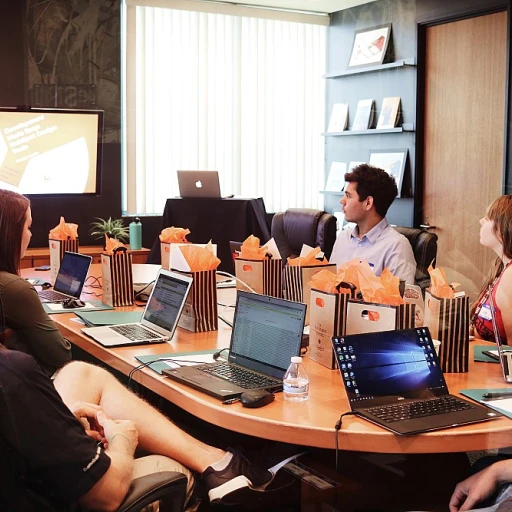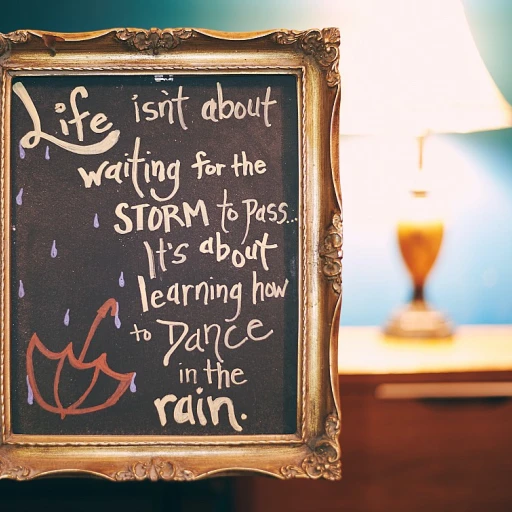
Understanding the Role of A/B Testing in Onboarding
Exploring the Impact of A/B Testing on Onboarding
A/B testing plays a pivotal role in refining the onboarding experience, offering insights that can significantly enhance user engagement and satisfaction. By systematically comparing two versions of a product or feature, companies can make data-driven decisions that optimize the onboarding process. This method is not just about testing; it's about understanding user behavior and preferences to create a seamless introduction to your product.
Why A/B Testing Matters in Onboarding
When a new user interacts with your product for the first time, their experience can determine whether they become a long-term user or abandon the product altogether. A/B testing allows you to experiment with different onboarding strategies, measuring which approach yields the best results in terms of user retention and satisfaction. By analyzing metrics such as click-through rates, time spent on each step, and completion rates, you can identify the most effective onboarding practices.
Key Elements of A/B Testing in Onboarding
- Hypothesis Formulation: Before conducting any test, it's crucial to have a clear hypothesis. What change do you expect to see, and why?
- Sample Size and Statistical Significance: Ensure that your sample size is large enough to achieve statistical significance. This helps in reducing type errors and false positives.
- Control and Treatment Groups: Divide your users into a control group and a treatment group to compare the effects of different onboarding strategies.
- Data Collection and Analysis: Collect data meticulously and analyze it to draw meaningful conclusions. This is where data science and statistical power come into play.
For those preparing for A/B testing interviews, understanding these elements is crucial. Interview questions often focus on your ability to design experiments, analyze data, and interpret results. As you delve deeper into the nuances of A/B testing, you'll find that it not only enhances the onboarding process but also provides valuable insights into user behavior and preferences. For more detailed guidance on crafting effective onboarding strategies, consider exploring this resource.
Common A/B Testing Interview Questions
Typical Queries During A/B Testing Discussions
When preparing for an A/B testing interview, familiarizing yourself with common questions can sharpen your skills and boost your confidence. Here are key areas interviewers often explore:- Understanding the Basics: Be prepared to explain what A/B testing is, its components like the control group and treatment, and why it's crucial in drawing data-driven insights. Discussing the null hypothesis, significance level, and statistical significance shows your grasp of foundational concepts.
- Analyzing Data and Metrics: Expect questions on how to interpret results from an A/B test. The ability to discuss statistical power, statistical significance, and type I and II errors, commonly known as false positives and false negatives, will be crucial in these discussions. Highlight your data science skills and experience with metrics evaluation.
- Experimental Design: You should be able to discuss designing an A/B test, including determining sample size and considering one-tailed or two-tailed tests. Reflect on your hands-on experience crafting hypotheses and defining experiment protocols.
- Real-World Applications: Interviewers may ask you to describe a real-world scenario where A/B testing was implemented. Your ability to link practical experiences with theoretical knowledge can set you apart. Explore enhancing user engagement through product-led onboarding for real-world applications.
- Querying with SQL: Some interviews might require you to write SQL queries to extract and analyze A/B test data. You should be prepared to manipulate datasets to provide supporting analysis.
Preparing for A/B Testing Interviews
Getting Ready for A/B Testing Interviews
A strategic approach is essential when preparing for A/B testing interviews. Beyond knowing the bare mechanics of an experiment, applicants need to demonstrate a deep understanding of the nuances involved in executing and analyzing tests.- Master Statistical Concepts: A thorough comprehension of key statistical concepts, like hypothesis testing and statistical power, is crucial. Be ready to delve into different concepts such as null hypothesis, type error, and tailed tests, as these are frequently the foundation of interview questions.
- Understand Data Science Applications: Be prepared to discuss data science methodologies that complement the development and analysis of A/B tests. Interview questions may probe your understanding of statistical significance, control group versus treatment group setup, and significance level measurement.
- Articulate Experiment Design: Discuss the importance of factors such as sample size and group segmentation. Highlight your capability to use tools like SQL to dissect data meaningfully.
- Address Machine Learning Influences: While not always a focal point, an understanding of how machine learning interacts with A/B testing can set candidates apart. Knowledge of how machine learning predictions can influence test metrics and outcomes is advantageous.
- Provide Real-World Examples: Use past experiences to illustrate how you've implemented A/B testing to garner meaningful insights. Discuss any false positives, challenges in data interpretation, or successes in elevating user engagement through experimentation.
Real-World A/B Testing Scenarios
Practical Implementation of A/B Testing Concepts
Understanding real-world A/B testing scenarios is crucial for anyone navigating these interviews. Here's a rundown of practical aspects that can help solidify your grasp of A/B testing and enhance your ability to discuss it intelligently in an interview setting:- Developing a Hypothesis: Start by identifying the problem and formulating a clear hypothesis. This requires distinguishing between null hypothesis and alternative hypotheses, which serve as the foundation of your tests.
- Designing an Experiment: Ensure your experiments are skillfully designed. This involves splitting your users into control and treatment groups to measure the effect of your test accurately. Make sure to address variables such as sample size and statistical significance to yield reliable results.
- Choosing the Right Metrics: Selecting appropriate metrics is integral to understanding the impact. Questions often explore how you determine which metrics best reflect user behavior and the product's effectiveness.
- Managing Variables: Consider factors that could skew results, such as tailed tests and type error. Skillful management of these variables can differentiate successful A/B testers.
- Utilizing Statistical Methods: Leverage data science principles by applying statistical power and significance level analyses to validate findings. Interview discussions might probe your ability to interpret statistical data effectively.
- Addressing Machine Learning: In the era of advanced technology, understanding how machine learning impacts testing scenarios is beneficial. It may come up in the context of how machine learning can automate or enhance analysis.
Mistakes to Avoid in A/B Testing Interviews
Common Pitfalls to Watch Out For
Navigating A/B testing interviews can be tricky, especially when trying to demonstrate your understanding of statistical concepts. One potential trap is not being clear about the difference between a control group and a treatment group. Often, interview questions aim to test your knowledge in setting up these groups correctly as they are foundational to understanding your sample size and achieving statistical significance. Another mistake involves overlooking the importance of formulating a precise null hypothesis. This hypothesis forms the baseline for your experiments, and failing to establish it accurately can lead to misunderstandings during the tests. Misinterpretation between null and alternative hypotheses in scenarios, such as a one-tailed or two-tailed test, can lead to type errors. Carefully crafting hypotheses ensures that the sample sizes are well-calibrated and data-driven insights are valid.Grasp the Science and Metrics Behind the Process
While being interviewed, it's crucial to articulate a strong grasp of data science and the statistical power it wields within the process of A/B testing. Recruitment tends to emphasize your ability to distinguish between false positives and genuine observations, especially when discussing statistical significance. Questions may challenge you on the appropriate significance level for different scenarios, demanding a nuanced understanding of how these metrics shape the outcomes of your treatment and control experiments. When asked about real-world applications, draw on your experiences by discussing experiments where sample sizes weren't well-defined, leading to skewed data interpretations. Sharing such learnings demonstrates practical knowledge and your ability to apply theoretical concepts to realistic situations.Preparation Through Practical Application
Lastly, don't shy away from discussing how machine learning interfaces with A/B testing to streamline processes and enhance experiment outputs. Interviewers appreciate when candidates can relate SQL interview techniques to manipulate and analyze data effectively, improving the outcome of tests. Mastering these concepts not only bolsters your interview performance but also enriches the onboarding process by informing better product decisions through well-conducted testing practices.Enhancing Your Onboarding with A/B Testing Insights
Maximizing Onboarding Efficiency through A/B Testing Insights
Leveraging A/B testing insights can significantly enhance your onboarding process. By analyzing the test results, you can make data-driven decisions that improve user experience and product engagement. This is not just about running tests, but rather about integrating the insights into your larger onboarding strategy.
Consider the following ways A/B testing can enhance your onboarding process:
- Refining User Journeys: With each test, focus on understanding user behavior and identifying pain points. Tailor your onboarding path to address these issues, creating a smoother experience.
- Iterative Improvements: Use testing data to iteratively improve aspects of the onboarding experience. Over time, small adjustments based on A/B test results can accumulate, leading to substantial enhancement.
- Validating Assumptions: Before introducing a new element into your onboarding process, validate your hypothesis through controlled experiments. This helps in confirming whether your assumptions are correct beyond statistical significance.
- Optimizing Communications: Experiment with different communication styles during onboarding. Assess how variations in messaging impact user engagement and long-term retention.
- Reducing Type Errors: A/B testing helps reduce the chances of implementing changes based on false positives or other statistical errors by analyzing the statistical power and metrics involved.
Remember, the ultimate goal is to enrich the onboarding experience and drive user satisfaction. This requires an understanding of the intricacies involved in A/B testing, from sample size calculations to setting appropriate significance levels.
For more insights on the interplay between data science and onboarding strategies, consider exploring resources that delve into SQL and machine learning applications during the Onboarding Experience.












